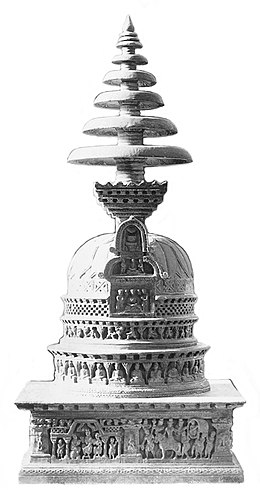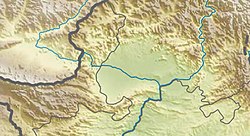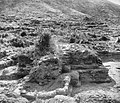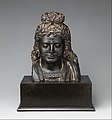|
Loriyan Tangai
Loriyan Tangai is an archaeological site in the Gandhara area of Pakistan, consisting of many stupas and religious buildings where many Buddhist statues were discovered. The stupas were excavated by Alexander Caddy in 1896, and the many statues of the site sent to the Indian Museum of Calcutta.[1] Buddha "of the year 318"One of the statues of the Buddha from Loriyan Tangai has an inscription mentioning "the year 318". The era in question is not specified, but it is now thought, following the discovery of the Bajaur reliquary inscription, that it is about the Yavana era beginning in 174 BCE, and gives a date for the Buddha statue of about 143 CE.[2] The inscription at the base of the statue is:
This would make it one of the earliest known representations of the Buddha, after the Bimaran casket (1st century CE), and at about the same time as the Buddhist coins of Kanishka.[2] The two devotees on the right side of the pedestal are in Indo-Scythian suit (loose trousers, tunic, and hood).[4][5] Their characteristic trousers appear clearly on close-up pictures. The statue is now in Indian Museum of Calcutta.[2]
Another statue of Buddha, the Buddha of Hashtnagar, is inscribed from the year 384, which is thought to be 209 CE. Only the pedestal is preserved in the British Museum, the statue itself, with folds of clothing having more relief than those of the Loriyan Tangai Buddha, having disappeared.[2] Gallery
References
Wikimedia Commons has media related to Loriyan Tangai. |
||||||||||||||||||||||||||||||||||||











![A Loriyan Tangai Buddha from the same period as the Buddha dated "Year 318".[2]](http://upload.wikimedia.org/wikipedia/commons/thumb/8/8d/Loriya_Tangai_standing_Buddha.jpg/65px-Loriya_Tangai_standing_Buddha.jpg)








